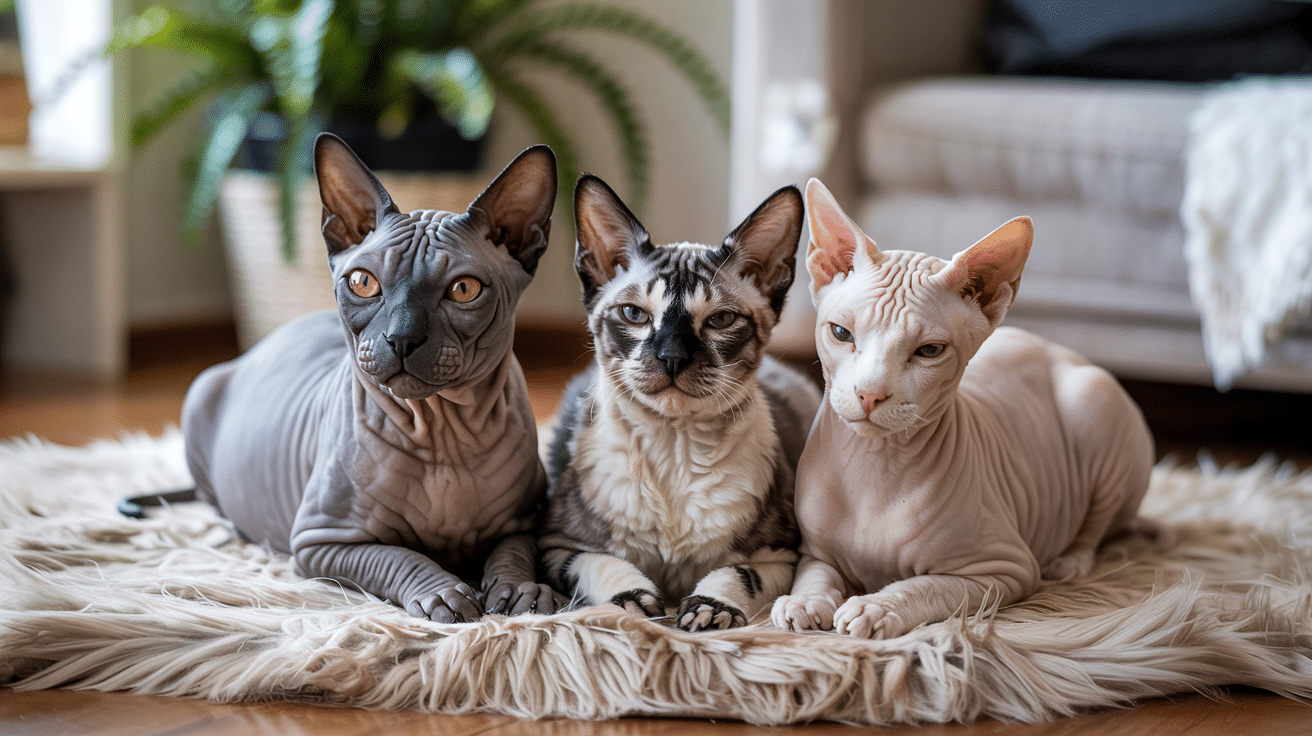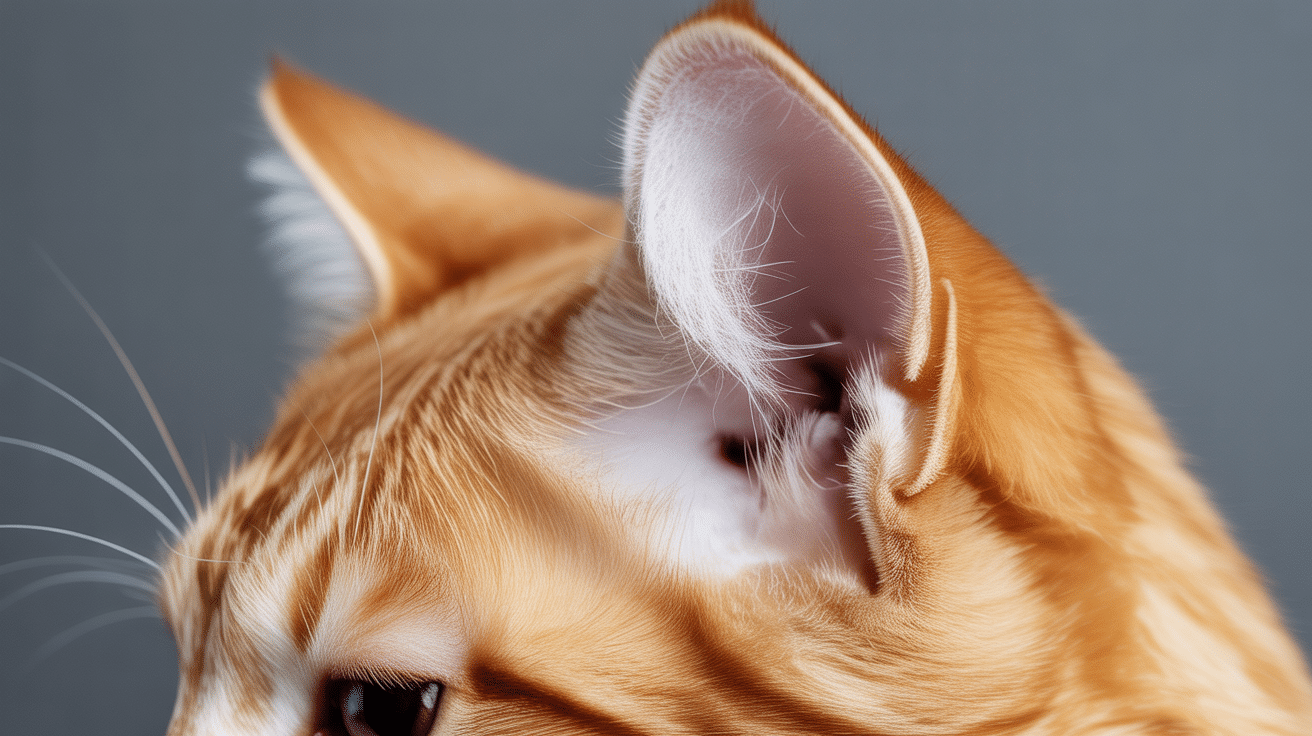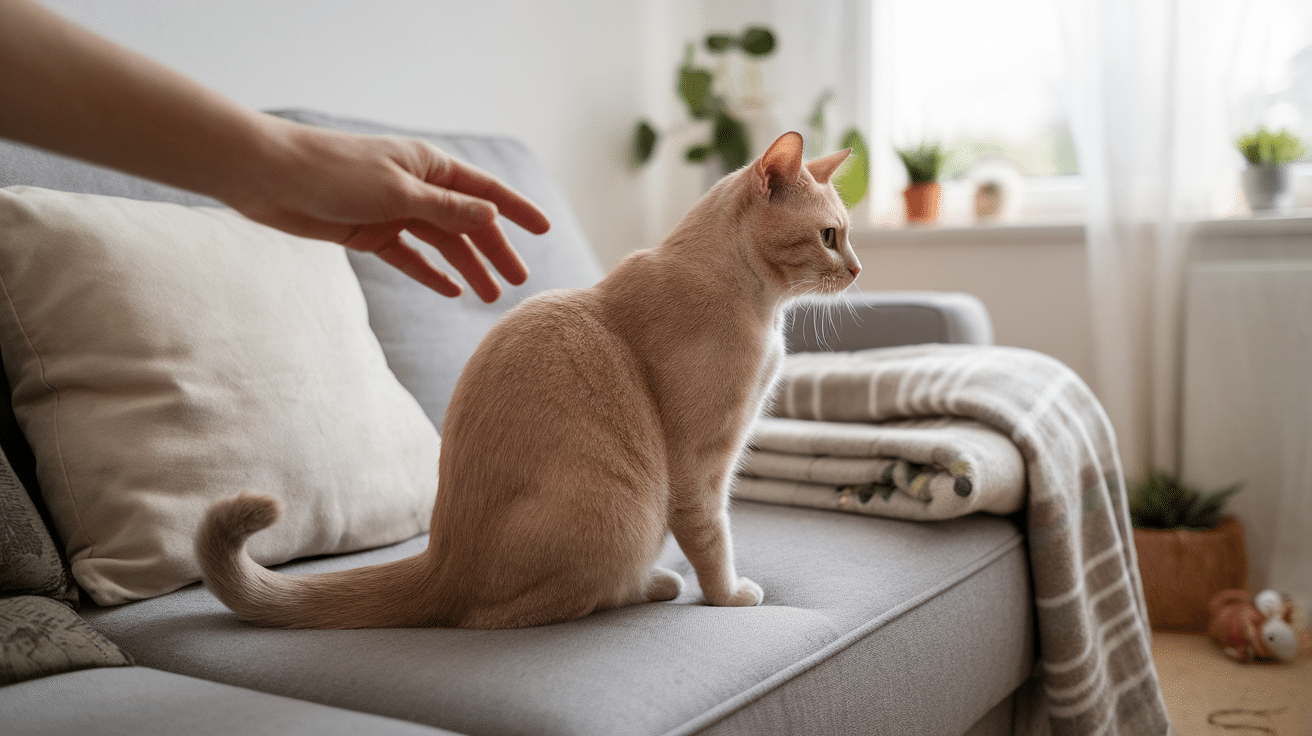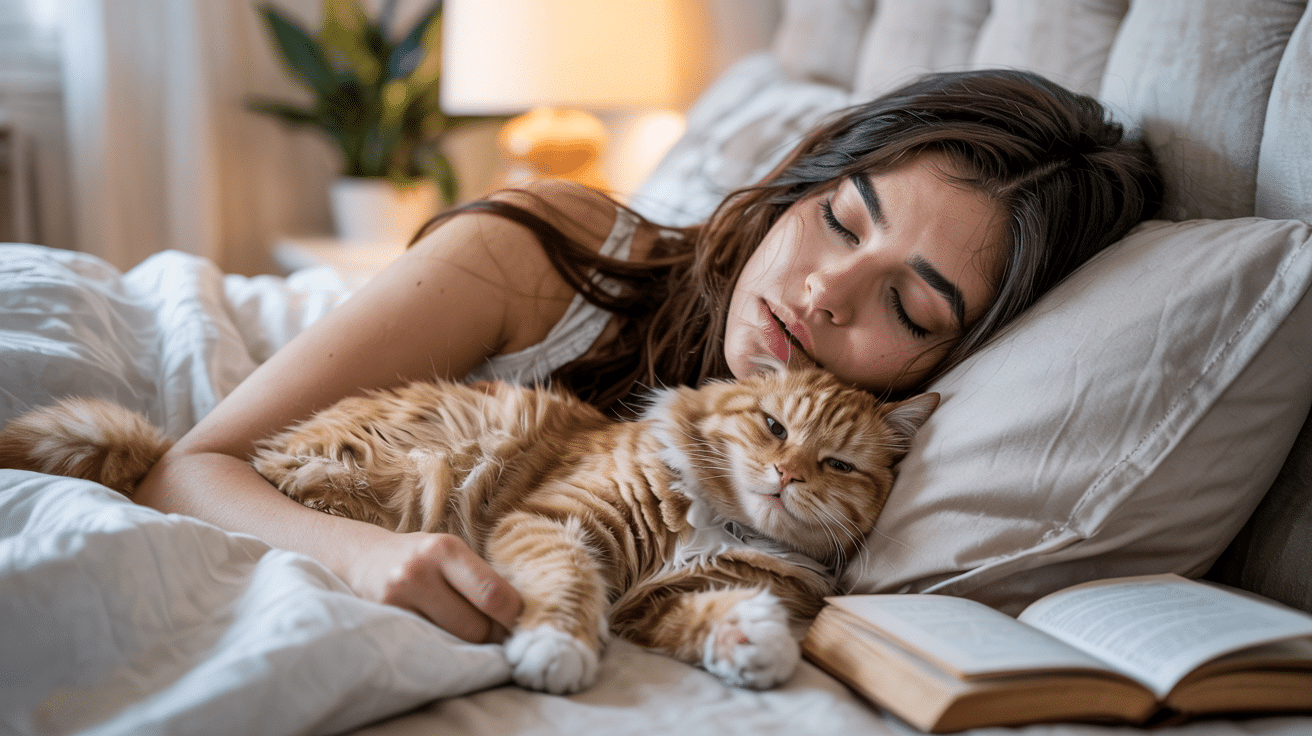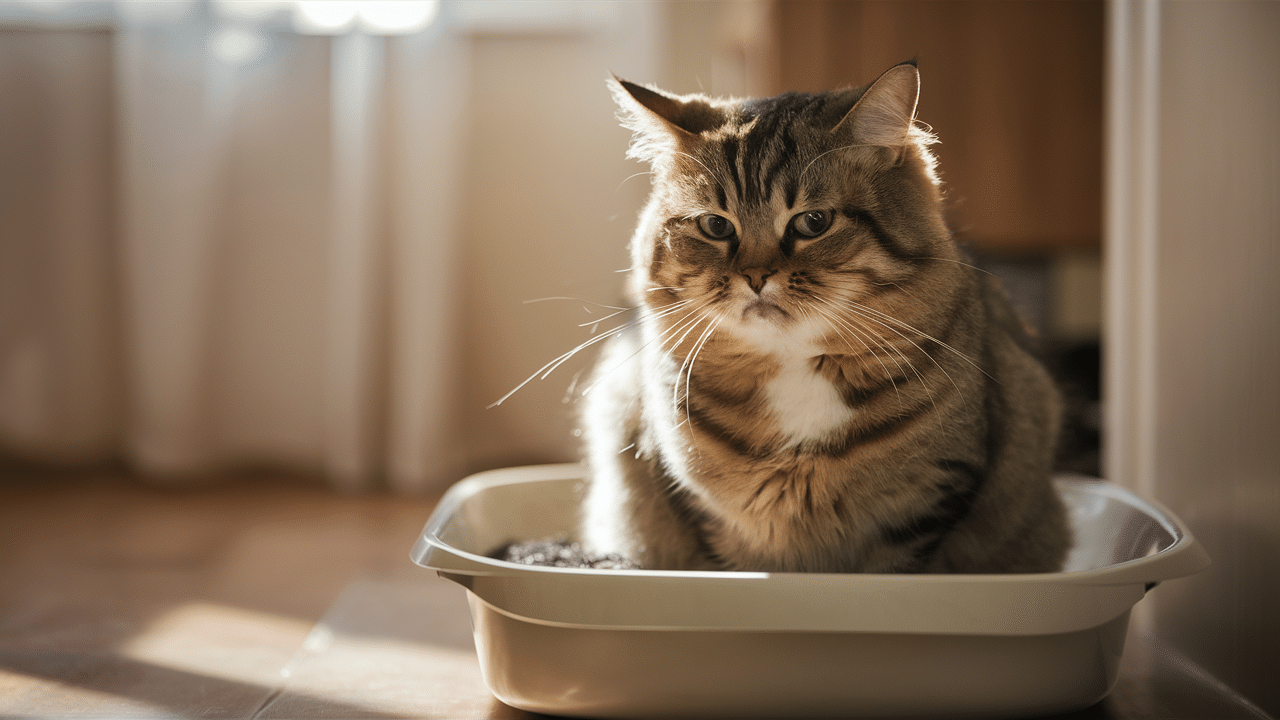When I first saw a few fuzzy patches on my hairless cat, I was a little surprised. I’d expected smooth, bare skin, but there it was, soft fuzz on the ears and tail.
If you’re noticing the same thing, you’re not imagining it. Some hairless breeds can grow light coats, patchy fur, or even change their appearance over time.
In this post, I’ll walk you through the cats known for this unexpected trait and what it means for their care.
You’ll get a closer look at breeds like the Donskoy, Peterbald, and Minskin, and why they might not stay bald forever. These cats are full of surprises, and that’s part of the fun.
Hairy Hairless Cat: Detailed Overview
These cats belong to breeds that are often labeled “hairless,” yet they can grow soft fuzz, thin patches, or even seasonal hair.
This usually happens due to genetics, age, or environmental changes. Breeds like the Donskoy, Peterbald, and Sphynx are the most common examples.
Some of them start bald as kittens but later develop coats that range from velvety to bristly. While they may look unusual, these cats are healthy and full of personality.
Their hair growth doesn’t mean something is wrong. It just shows how unique each cat can be, even within the same breed.
Hairy Hairless Cat Breeds
Hairless cat breeds are known for their unique mix of bare skin and unexpected fuzz or patchy fur.
Though often labeled as bald, many of these breeds develop soft hair on parts of their body due to genetics or age. Each one has its coat type, look, and care needs.
1. Donskoy
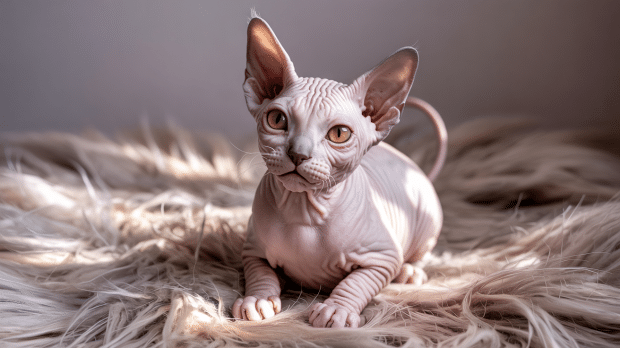
The Donskoy cat, also called Don Sphynx, may be hairless at birth but can develop patchy or full coats later in life.
Its skin feels warm and rubbery, and it comes in four coat types, ranging from bald to brush-like. These cats are known for their expressive eyes, long limbs, and sociable behavior.
2. Peterbald
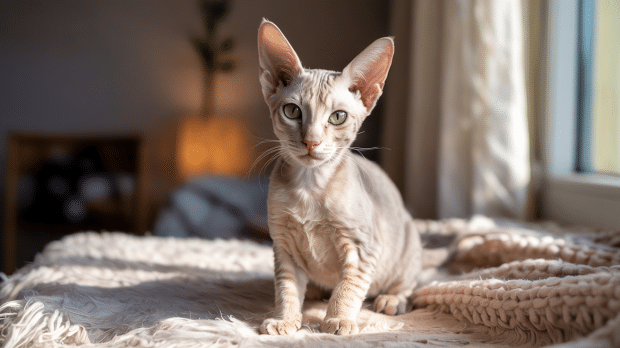
The Peterbald is a sleek, slim cat that can be completely bald, lightly fuzzy, or even have a short coat. Its fur type may change as it grows, which surprises many owners.
They often have long faces, almond-shaped eyes, and a gentle, affectionate nature. They may be born with hair that falls out or changes over time.
3. Sphynx
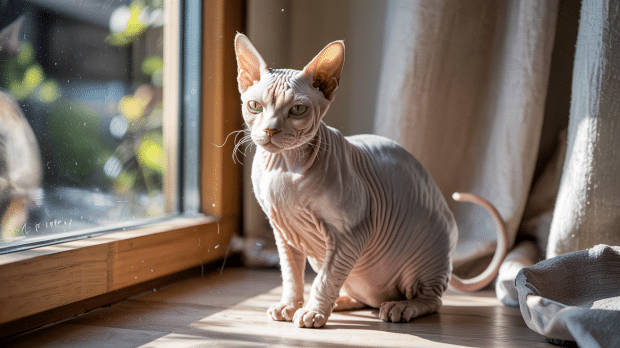
Sphynx cats are often considered the classic hairless breed. Still, many grow fine fuzz that feels like suede.
In some cases, they develop thicker fur on the nose, ears, or tail. Known for their curious personality and big eyes, they love warmth and attention.
4. Ukrainian Levkoy
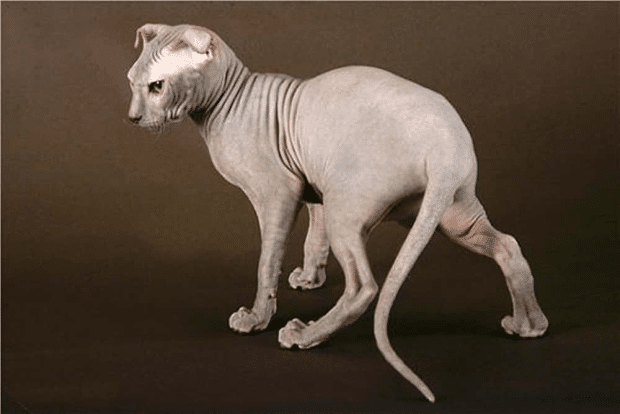
The Ukrainian Levkoy stands out with its folded ears and angular features. It often has thin or patchy hair, especially around the head and limbs.
These cats have a dog-like attitude and enjoy social environments. Their coat and ear shape make them instantly recognizable.
5. Elf Cat
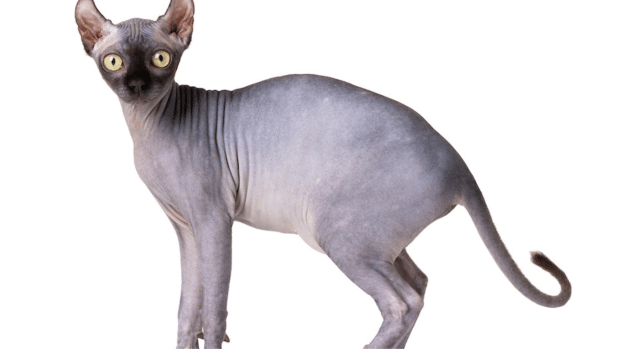
Elf cats are hybrids with curled ears and mostly hairless bodies. They may grow light fur around the nose, ears, and feet.
Their unusual look and playful nature make them popular among cat lovers. The breed mixes the Sphynx and American Curl lines.
6. Bambino
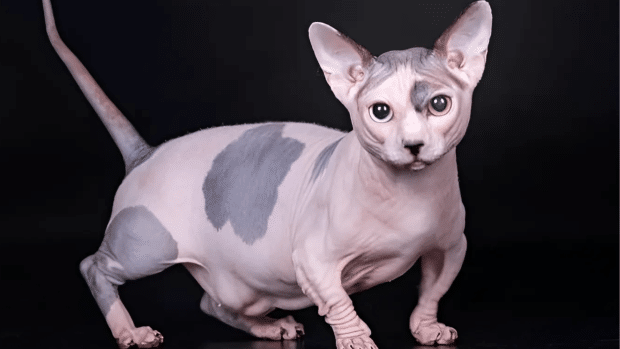
The Bambino cat mixes the Sphynx and Munchkin breeds. It has short legs and a mostly bald body but may have fur patches on the legs, face, or tail.
Despite their small size, they’re energetic and social cats that enjoy exploring. They enjoy attention and often act like playful kittens well into adulthood.
7. Dwelf
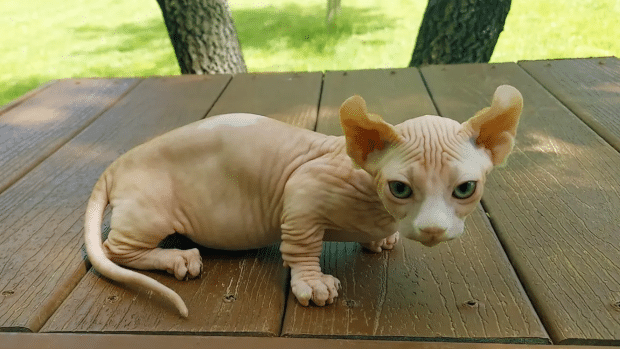
Dwelf cats have short legs, curled ears, and often a near-naked body with slight fuzz. This breed is a mix of Sphynx, Munchkin, and American Curl.
Though small in size, they’re outgoing and lively, often following their owners from room to room. Their skin may feel slightly rubbery with occasional fuzzy spots.
8. Minskin
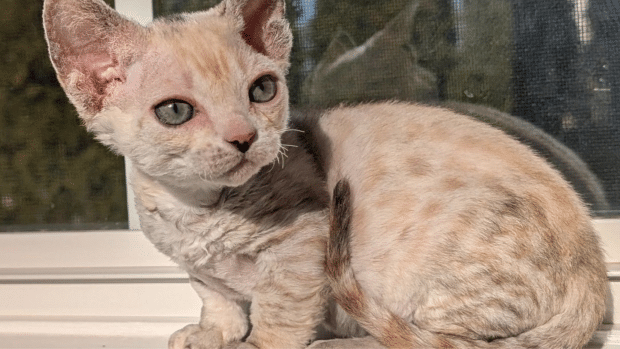
Minskins have a unique coat pattern: fur on the points (ears, face, tail, and legs) and a hairless or fuzzy body.
This makes them look like they’re wearing socks and gloves. They are affectionate, playful, and love being part of a family.
9. Lykoi
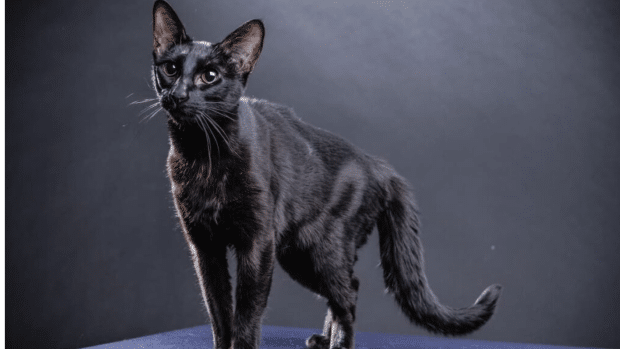
Lykoi cats, sometimes called “werewolf cats,” often have patchy fur and bald spots. Some are born nearly hairless and develop more fur later.
Their unique appearance comes from a natural gene mutation. They are curious, observant, and love interactive play.
10. Kohana
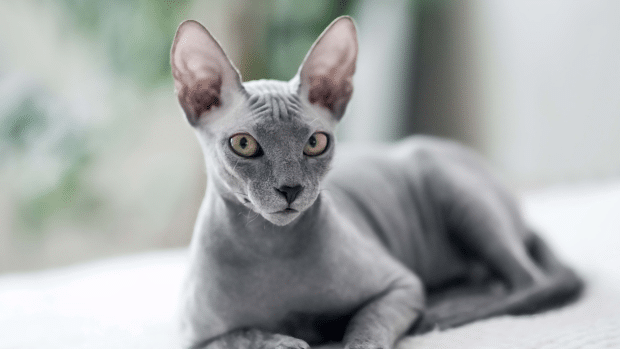
The Kohana, also known as the Hawaiian Hairless, is one of the few truly bald cat breeds. However, some may show extremely fine hair growth on the tail or ears.
Kohanas are gentle companions with a smooth feel. Their near-total lack of follicles makes them unique among bald breeds. They enjoy quiet settings and frequent human contact.
11. Sphynxie Bob
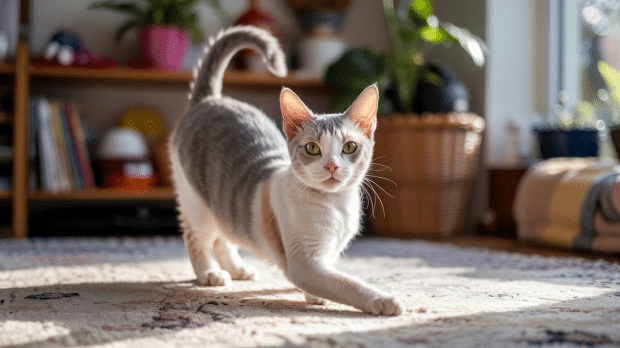
This rare breed combines the hairless trait of the Sphynx with a short or bobbed tail. They may show fuzzy patches on the tail or limbs.
With a curious nature and bold energy, they thrive in active homes. Their short tail is either kinked, puffed, or missing entirely. They are outgoing and daring and enjoy chasing small toys.
12. Canadian Hairless (Early Sphynx Line)
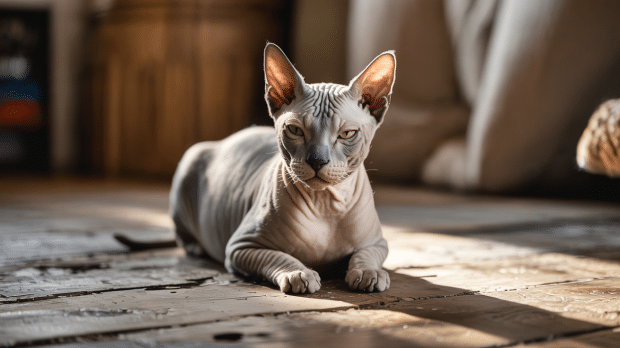
The early lines of the Sphynx, often called Canadian Hairless, were more likely to grow fur with age or changes in health. They still resembled today’s Sphynx but were less consistently bald.
Some had tufts of fur that changed with temperature or diet. These early cats helped shape the traits of today’s modern Sphynx.
How to Care for a Hairless Cat
Caring for a hairless cat requires extra attention, especially when it comes to grooming and skin health.
These cats often need regular baths to manage oil buildup, even if they have some fur. Use gentle, pet-safe products to avoid irritation.
Also, keep an eye on temperature; hairless cats with fuzz still need warm spaces, sweaters, or heated beds during colder months. Their skin may also need protection from the sun.
Check to see if your cat is fully bald or lightly furry. Regular care helps keep cats clean, healthy, and comfortable in any season.
Does Fur Mean My Sphynx Isn’t Purebred?
Not at all. Many purebred Sphynx cats grow fine fuzz or light patches of fur, especially on their nose, ears, or tail.
This doesn’t mean they aren’t purebred; it’s actually quite common within the breed. Hair growth can vary based on genetics, hormones, age, or even seasonal changes.
Some Sphynx cats are born with a thin layer of fuzz that stays, while others develop patches later. Unless the coat becomes thick and long, it usually falls within the normal range for the breed.
Final Thoughts
Once you’ve seen a patch of fuzz pop up on your so-called hairless cat, it’s hard not to think about what’s going on. I’ve been there too, and now you know it’s pretty standard.
These breeds come with a wide range of coat types and changes, even if they started smooth. What matters most is how you care for them, keep them warm, and enjoy their one-of-a-kind look.
If your cat stays bald or grows a soft layer over time, they’re still the same curious, lively companion. That little bit of fuzz makes their story even better.
Browse other blogs and learn more about different cats and their breeds today.
